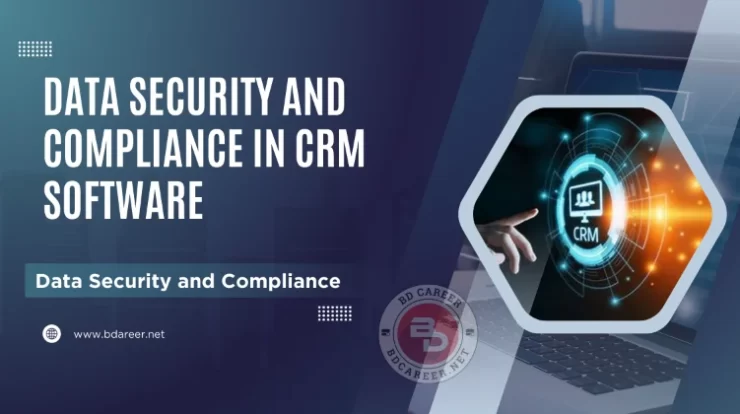
Businesses often struggle with the challenges posed by siloed systems, where disparate tools and platforms fail to communicate effectively. These silos result in inefficiencies, duplicated efforts, and missed opportunities. The transformative potential of integrating Customer Relationship Management (CRM) systems with other essential business tools is immense.
This article serves as a comprehensive guide, outlining the benefits, steps, and best practices for integrating CRM with tools like Enterprise Resource Planning (ERP), marketing automation, and more. Integrated systems streamline operations, enhance customer experiences, and significantly boost return on investment (ROI). By breaking down these barriers, businesses can unlock new levels of efficiency and collaboration.
Contents
Why CRM Integration Matters
Customer Relationship Management (CRM) systems are the backbone of modern business operations, centralizing customer data, sales activities, and interactions. However, when these systems operate in isolation, inefficiencies arise, such as data duplication, communication gaps, and missed opportunities.
Inefficiencies of Standalone Systems:
- Lack of real-time data sharing between departments.
- Duplicate or inconsistent customer records.
- Increased manual effort for data entry and analysis.
When businesses operate with standalone systems, they often encounter inefficiencies that hinder productivity. Data silos emerge when departments use separate platforms that do not communicate with one another. This separation can lead to duplicated efforts, inconsistent data, and a lack of cohesive strategy.
Benefits of Integration:
- Centralized Data: A unified data source improves decision-making and eliminates discrepancies.
- Enhanced Customer Insights: Integrated systems provide a holistic view of the customer journey.
- Streamlined Workflows: Automation reduces redundancies and aligns departmental efforts.
Data Point: According to a recent study, businesses that integrate CRM with other tools experience a 20% increase in productivity and a 15% boost in ROI.

Key Business Tools to Integrate with CRM
To fully leverage your CRM, consider integrating it with these essential business tools:
ERP (Enterprise Resource Planning):
ERP systems manage critical operations like inventory, billing, and supply chain management. Integrating ERP with CRM ensures:
- Seamless Order Processing: Sync customer orders with inventory availability, reducing delays.
- Improved Financial Accuracy: Align customer billing details with payment records. Example Use Case: A retail company integrates CRM with ERP to automatically update inventory levels when a sale is made, ensuring accurate stock tracking.
Integrating CRM with ERP systems aligns customer data with inventory management, billing processes, and supply chain logistics. For example, streamlining order processing becomes more efficient when sales teams have real-time access to inventory levels and order statuses.
Marketing Automation:
Marketing automation tools enhance targeting and campaign efficiency. Integration enables:
- Personalized Campaigns: Use CRM data to segment customers and automate tailored messages.
- Lead Scoring: Combine marketing and CRM data to identify high-potential leads. Example Use Case: An e-commerce business automates abandoned cart emails using data from CRM, leading to a 30% increase in recovered sales.
By connecting CRM with marketing automation tools, businesses can leverage unified customer data to improve targeting efforts. For instance, personalized campaigns can be automated based on customer interactions tracked within the CRM system.
Customer Support Tools:
Integrated systems improve support by linking tickets to customer profiles.
- Faster Resolutions: Agents access context from CRM for quicker problem-solving.
- Consistent Service: Historical data ensures continuity across touchpoints. Example Use Case: A software company uses CRM integration to provide agents with a customer’s full support history, reducing average resolution time by 25%.
Integration with customer support platforms ensures seamless service delivery. Unified ticketing systems enable faster issue resolution by providing support teams access to relevant CRM data during customer interactions.
E-commerce Platforms:
For businesses with online stores, syncing CRM with e-commerce platforms:
- Synchronizes Sales Data: Ensures accurate customer records and order histories.
- Automates Follow-Ups: Send timely reminders or promotions. Example Use Case: A fashion retailer integrates CRM with their online store to send personalized recommendations based on purchase history.
Synchronizing CRM with e-commerce solutions allows businesses to automate follow-ups on cart abandonment by utilizing insights from previous purchases. This integration enhances the overall shopping experience for customers and drives sales conversions.
Tool | Key Benefit | Example Use Case |
ERP | Real-time inventory and billing | Prevent overpromising on stock availability |
Marketing Automation | Personalized customer engagement | Trigger automated campaigns post-purchase |
Customer Support | Context-aware ticket resolution | Faster issue handling with purchase insights |
E-commerce | Synchronized sales and preferences | Cart abandonment follow-ups |
Steps to Successfully Integrate CRM with Other Tools
Embarking on a CRM integration journey might feel overwhelming, but breaking it into manageable steps makes it much simpler. Here’s a roadmap to guide you:
1. Assess Business Needs
Start by identifying what you want to achieve. Are you looking to streamline workflows? Improve customer insights? Pinpointing your goals will shape the integration process.
2. Choose Compatible Tools
Not all tools play nicely together. Look for software with native integrations or robust APIs to minimize headaches down the line.
3. Plan the Integration
A clear roadmap is crucial. Outline the systems you’ll integrate, the timeline, and any potential roadblocks. Pro tip: start with high-impact integrations to see quick wins.
4. Implement Gradually
Rome wasn’t built in a day, and neither is a fully integrated system. Begin with one or two tools and expand as you gain confidence.
5. Test and Optimize
Test every aspect of the integration to ensure data flows correctly and systems communicate effectively. Regular audits will help maintain functionality and accuracy.
Challenges to Watch For:
- Data Silos: Ensure all systems share data seamlessly.
- Incompatibility: Invest in tools with proven compatibility.
Expert Tip: If you’re tackling a complex integration, consider bringing in a consultant or vendor with proven expertise. They’ll save you time and headaches.

Benefits of a Fully Integrated System
Enhanced Collaboration: Integrated systems foster collaboration by breaking down barriers between departments. Teams can access real-time data, enabling informed decision-making and better coordination.
Real-Time Insights: Centralized data provides actionable insights, allowing businesses to adapt quickly to market changes and customer needs.
Improved Customer Satisfaction: Personalized experiences, faster response times, and consistent service quality lead to higher customer satisfaction and loyalty.
Scalability: Integrated systems are easier to scale, supporting business growth without additional complexity.
Case Study: A mid-sized retailer saw a 30% increase in customer retention and a 25% boost in sales after integrating its CRM with marketing automation and ERP tools.
Best Practices for CRM Integration
Conduct a Needs Analysis: Understand your business requirements and prioritize integrations that deliver the most value.
Invest in Tools with Robust APIs: Choose platforms that offer extensive API capabilities to ensure flexibility and ease of integration.
Train Your Team: Provide training to ensure employees understand how to use the integrated systems effectively. Adoption is critical to realizing the full benefits of integration.
Regular Audits: Periodically review and update integrations to address evolving business needs and technological advancements.
Secure Data Transfer: Implement secure methods for data exchange, such as encryption and access controls, to protect sensitive customer information.
Conclusion
Integrating CRM with other business tools is no longer a luxury but a necessity for companies seeking to remain competitive in a dynamic market. The benefits of streamlined operations, enhanced customer experiences, and improved ROI are too significant to ignore.
Take the first step by evaluating your current systems and identifying key integration opportunities. Whether through internal teams or external specialists, prioritizing CRM integration can revolutionize your business processes and set the stage for sustained growth. Explore CRM tools with seamless integration capabilities or consult with integration experts to start your journey toward a fully connected business ecosystem.






